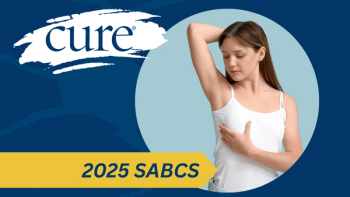
FDA-Approved Treatment ‘Great Positive Result in the Right Direction’ for Advanced HCC, Yet Unmet Needs Remain
The FDA approved Imjudo plus Imfinzi for advanced hepatocellular carcinoma, although more work is needed to develop a treatment that cures patients, an expert said.
A dual immunotherapy regimen with Imjudo (tremelimumab) plus Imfinzi (durvalumab) for unresectable hepatocellular carcinoma (HCC) provides patients with another treatment option with manageable side effects, although future research needs to focus on curing patients, according to an expert.
The Food and Drug Administration
“Unresectable HCC, unfortunately, was without any appropriate therapy for a long period of time, and for the last 15-plus years, we’re delighted that things have evolved rather very fast and very quickly,” said Dr. Ghassan Abou-Alfa, attending physician at Memorial Sloan Kettering Cancer Center in New York, in an interview with CURE®.
Abou-Alfa, who was the principal investigator of the HIMALAYA trial, which supported the FDA’s approval of the regimen, added that combination regimens like these provide additional for patients with HCC compared with other treatment options.
“No doubt that with the advent of those novel therapies, like (Imfinzi) plus (Imjudo), even in the setting of locally advanced disease, there could be value for systemic therapy,” he said. “And one of the studies has shown that whenever the tumor is beyond a certain criteria — called the up-to-seven criteria — systemic therapy might be more beneficial than local therapy.”
In particular, systemic therapies affect the entire body of a patient (such as chemotherapy) as opposed to local therapies, which target only the body part the cancer is affecting (like surgery).
Side effects from the combination therapy only appeared in 5% of patients that participated in the HIMALAYA trial and were manageable, consisting of diarrhea, elevated lipase and amylase (indicators of pancreatitis), elevated liver function (resulting in inflammation) and hyponatremia (low blood sodium level).
“(The side effects are) manageable, and most of the patients will benefit from therapy,” Abou-Alfa said. “I would say from hands-on experience still being limited, we did not have any patients that had to get rid of therapy or stop the therapy because of (side effects).”
Most patients in the HIMALAYA trial responded to some extent to the treatment, and Abou-Alfa said that approximately 3% had a complete response to the regimen, meaning that all signs of cancer disappeared in response to treatment.
“Can I claim this as a cure? Not yet,” he added. “We have to wait five years for a particular patient, but at least it’s in the right direction. All in all, by all means getting 100% cure is still our unmet need. … There’s still a lot of work to do.”
Despite the unmet need in this space, Abou-Alfa said he is pleased with the FDA approval of this regimen.
“We are delighted, the STRIDE regimen … is a great positive result in the right direction,” he said. “But understandably, we did not cure patients yet, even though we have to remember that even with that regimen, proudly, patients can have an incredible response, enough that a complete response, yes, it’s possible!”
For more news on cancer updates, research and education, don’t forget to





